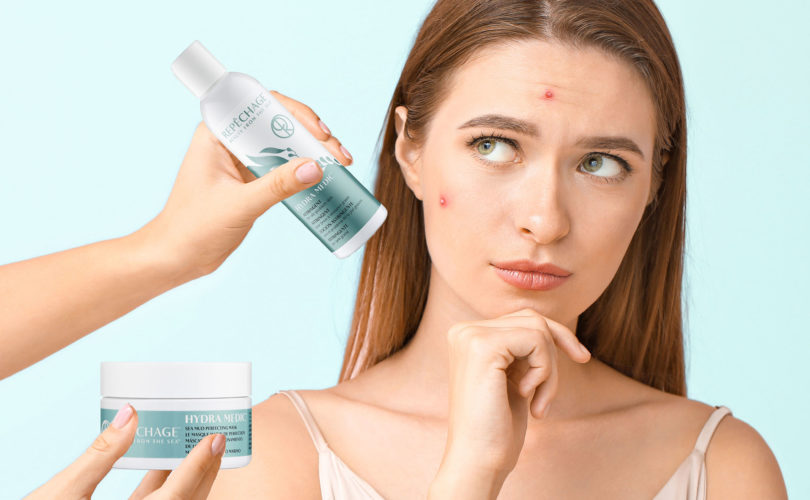Acne can affect up to 50 million people in the United States and can also be found in adults—with over 50% of women and 40% of men report suffering from acne in their adult years. Therefore, treating the appearance of acne breakouts can be one of the largest parts of a skin care business, and can create a loyal clientele that will continue as skin care concerns evolve over a lifetime.
There are many ingredients that can help lessen the appearance and reoccurrence of breakouts. It’s important to review and update your knowledge of bioadvances in order to continue to treat your clients’ ongoing skin concerns. Here, we’ll review the causes of common acne, and the most important ingredients that can be incorporated into treatments to help resolve this condition in your clients’ skin.
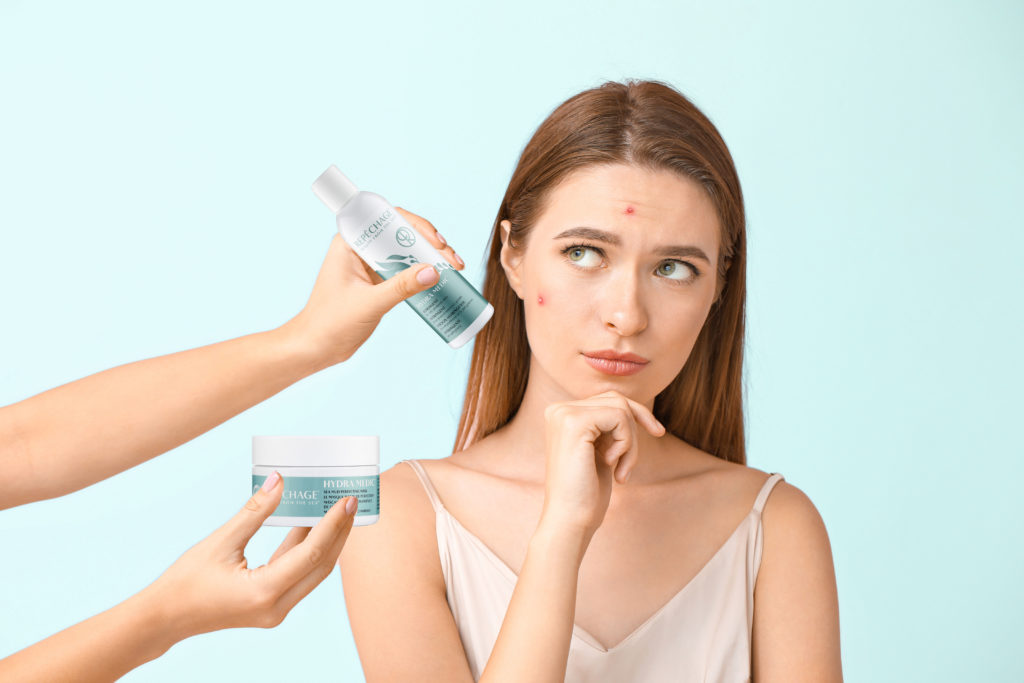
What Causes Oily Problem Skin?
When people think of this skin type, they think of teenagers, but it can affect many people through adulthood as well. Typically, teenage problem skin is triggered by hormonal changes brought on by the onset of puberty, specifically, increases and fluctuations in androgens such as testosterone. This in turn leads to an increase in sebum production which can start a cascade of events that lead to problem skin.
Environmental factors, increase in stress and hormonal fluctuations all contribute to an increase in oily problem skin in all age groups. This can be caused by fluctuating hormones in adults as well, especially around periods, during pregnancy, after discontinuing or starting birth control pills and especially at the onset of perimenopause—basically any time there is a fluctuation in hormones.
Some estimate as many as half of all adult women experience some form of oily problem skin due to an increase in androgen and a decrease of estrogen in peri-menopause. Although women produce only a small amount of male sex hormones, or androgens, due to the depletion of estrogen and progesterone, the effects become more dominant. This can lead to skin becoming excessively oily as well as excessively dehydrated during different times of the month.
For cases of moderate to severe acne, or when acne manifests due to hormonal imbalances such as pregnancy or peri-menopause, it is recommended to supplement facial treatments with medical consultation to address hormonal challenges.
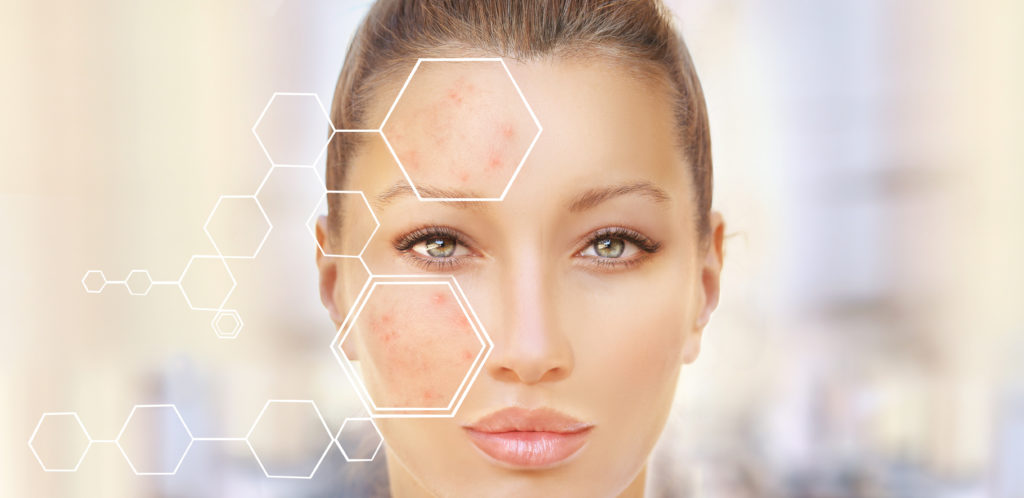
How Acne Forms
With oily problem skin, there are three factors that contribute to formation of acne: sebum, bacteria and enclosure. Sebum is an oily substance that lubricates the surface of the skin, and helps to prevent surface dehydration. When there is an overabundance of sebum production, it fills the sebaceous duct. This extra sebum serves as nutrients for bacteria, which creates an environment for clogged pores (blackheads). This environment can invite and harbor harmful bacteria which can draw white and red blood cells to the area, causing inflammation and infection. Enclosure occurs when the wall of the sebaceous duct thickens with the formation of a keratinaceous/horny plug which prevents the flow of sebum creating a closed environment, leading to blackheads and white heads, which can lead to inflammation caused by the body’s response and eventually rupturing the wall of the follicles to form pustules and cysts. This environment can lead to the proliferation of Propionibacterium acnes, or P. acnes, a type of bacteria linked to acne.
It is known that over-zealous cleansing and treatment of acne can actually exacerbate the condition, particularly with harsh soaps. Soaps are made of alkali and fatty acid, with a pH ranging from 9 to 10, more acid than the natural acid mantle of the skin. Daily use of soap can compromise the skin barrier of the stratum corneum, resulting in transepidermal water loss (TEWL). On top of this, many acne clients will use exfoliating products such as scrubs that are irritating and aggravating as well as highly alkaline
What is important is to use professional treatments designed and formulated to balance the condition, keeping the appearance of oil and sebum diminished while also creating the proper moisture level.
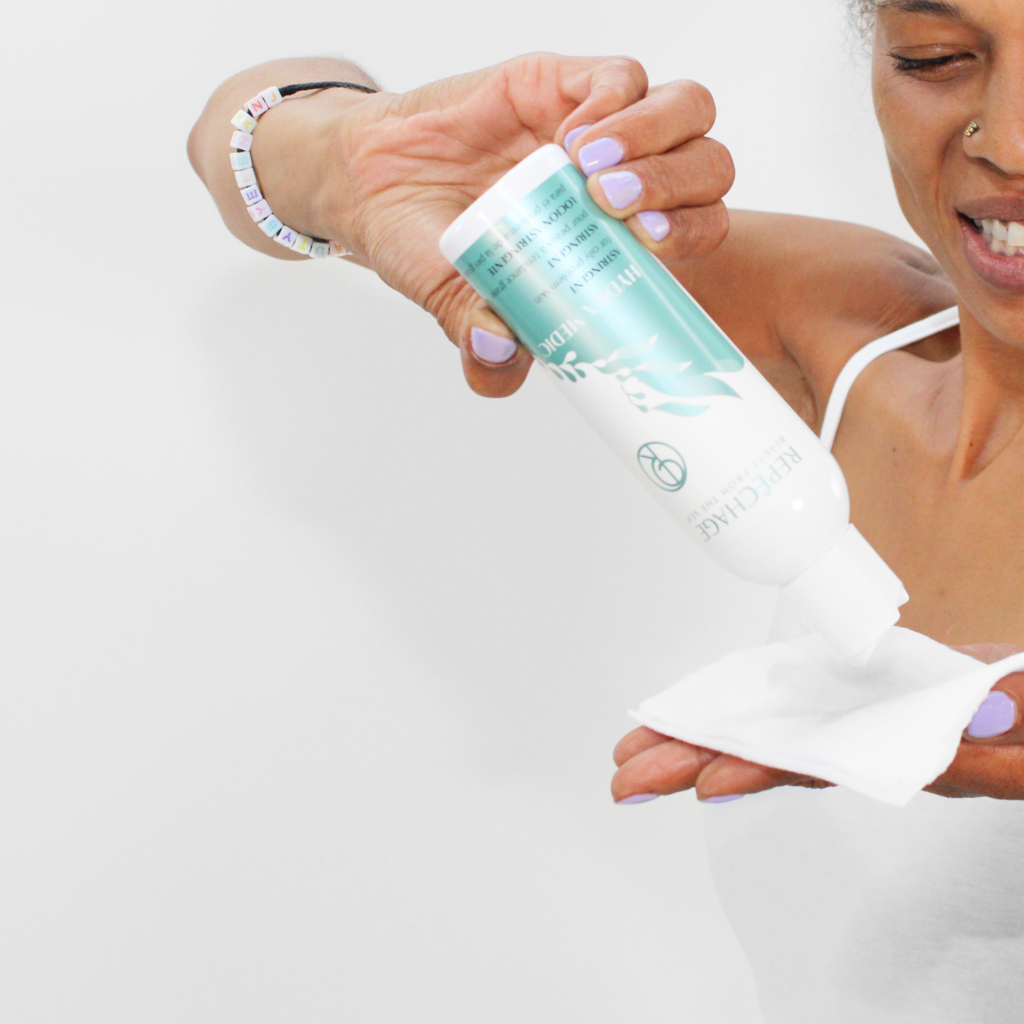
Key Ingredients:
The most important ingredients to look for in professional acne products and treatments include:
1. Seaweed:
Seaweeds are the aquatic, photosynthetic organisms categorized as algae, divided into three groups based on their pigment: the Rhodophyceae (red algae), Phaeophyceae (brown algae), and Chlorophyceae (green algae).
Specific species of seaweed found in the oceans have been found to contain poly and oligosaccharides that are used in cosmetic formulations to help combact the appearance of acne, including the brown seaweed Laminaria digitata. Yet, seaweeds can also exhibit powerful antioxidant as well as moisturizing properties, so can effectively help keep skin moisturized during acne treatment.
The Hydra Medic® Facial with Desincrustation Mask for Oily, Problem Skin is a deep cleansing and refining treatment that utilizes several seaweeds, including Laminaria Digitata and Laminaria Saccharina that both restore the skin with rich nutrients while helping reduce the appearance of oil, naturally.
2. AHA’s:
These are a group of hydroxy acids including glycolic, lactic, and citric acid. They work by thinning the stratum corneum, which helps remove surface layers of the skin.
The Repêchage Biolight® Luminex Mask is hybrid mask-peel, an entirely new concept in professional facial treatment, combining with Glycolic Acid (AHA), Fruit Acid, Laminaria Digitata seaweed and Kaolin clay to help exfoliate, deep cleanse and reduce surface oils.
Mild peels such as Rapidex can be performed at the spa, salon and recommended for at-home. This uses a safe, low percentage of glycolic acids, including lactic, citric, tartaric, marine and fruit acids with a pH of 3.5, buffered with anti-oxidant and soothing ingredients such as Seaweed extract, Chamomile and Green Tea. Used in succession for up to 14 days, this peel can be performed once a month, based on age and skin condition, for ongoing, consistent results.
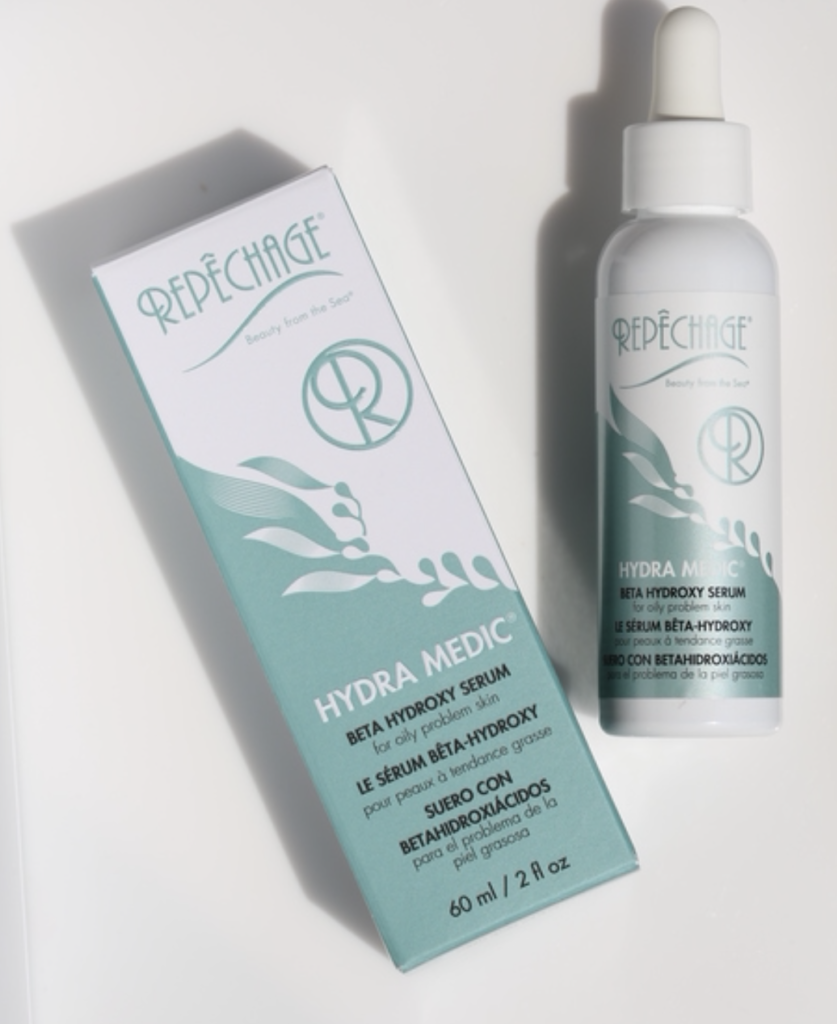
3. BHA’s:
Beta Hydroxy Acid (BHA), typically Salicylic acid is a very common ingredient used in the treatment of acne. One reason why it is particularly effective is because it is lipophilic, meaning it is oil-soluble, making it effective in everything from cleansers to astringents and targeted lotions and creams.
Hydra Medic® Beta Hydroxy Serum is a serum that uses both Alpha and Beta Hydroxy Acids to exfoliate to help reveal smoother, cleaner skin.
4. Zinc:
Zinc is an essential trace element used for decades for use in acne treatment. It is considered to work to help reduce the appearance of oil on the skin surface.
Hydra Medic® Mattifying Moisturizer is a non-greasy formula with Seaweed and Zinc to help reduce the appearance of shine while leaving skin with a soft, velvety-matte finish.
5. Sulfur:
Sulfur is a nonmetallic natural element found abundantly in the earth’s crust. It has been used medicinally for hundreds of years, including the treatment of acne. The clinical effects of sulfur in the treatment of acne are believed to be due at least partially to its ability to soften and shed the outer layer of the skin. As a precaution, always advise clients that when using products containing sulfur they must use sunscreen and that it is best to stay out of the sun.
Hydra Medic® Clear Complexion Drying Lotion utilizes Sulfur as well as Beta Hydroxy Acid and other botanical ingredients to combat shine and the appearance of breakouts overnight.
6. Willow Bark Extract:
Salicin, an extract from white willow bark, is the extract from which Salicylic Acid is derived. Known as Salix Alba, it is known to help slough skin while reducing the appearance of irritation. Clinical studies have found that Salicin has the ability to reduce the visible signs of skin aging as well as the appearance of pore size when applied topically.
Dermatologist tested Hydra Medic® Face Wash is a deep cleansing formula with Willow Bark Extract to gently exfoliate excess oil buildup and Laminaria Digitata Seaweed extract.
7. Clays and Muds:
Kaolin clay is a silicate mineral fine powder considered the most gentle of clays, helping to gently absorb excess oils from the skin, and can be used by even the most sensitive skin types.
Ichthammol: This is a calming mineral derived from a mixture of theophen and free sulfur and is especially useful in masks.
Sea Mud Perfecting Mask is a professional treatment that utilizes three different clays to deep cleanse and absorb oils while Seaweed and Allantoin help to leave the skin feeling moisturized and refreshed.
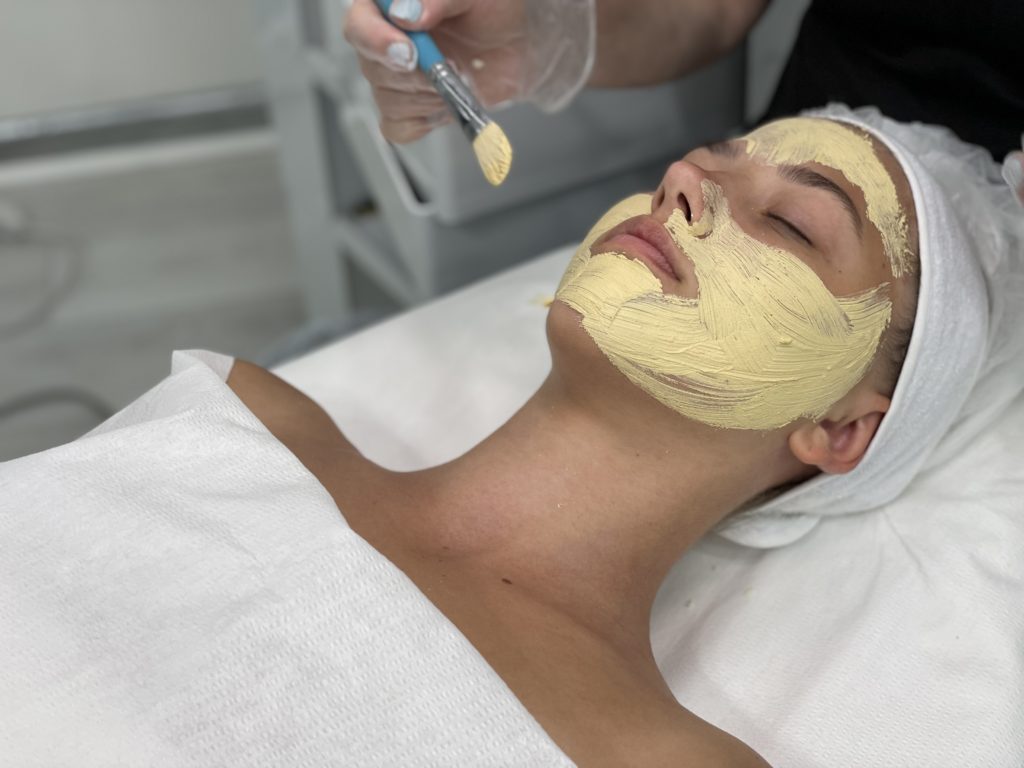
Helping to guide your clients successfully through their acne and breakouts can be one of the most rewarding aspects of an esthetician’s career. Continued education on this skin care topic, and keeping abreast of the latest ingredient innovations, will help estheticians continue to provide this important service to their clients to truly enhance their lives.
What are some of the ways you implement successful acne treatments in your spa or salon? Let us know in the comments!
